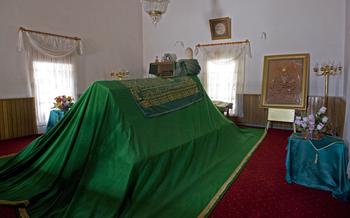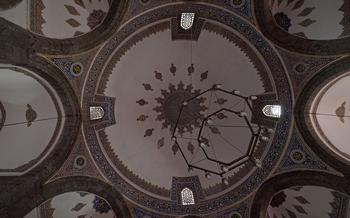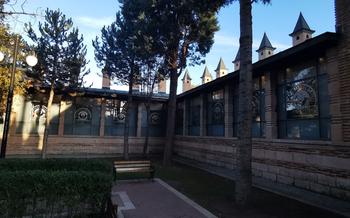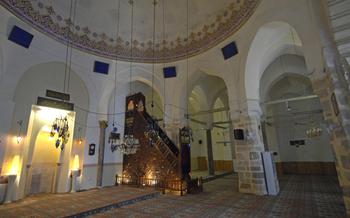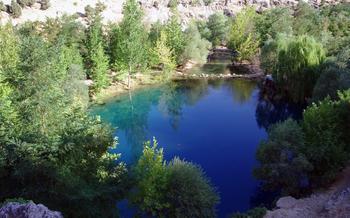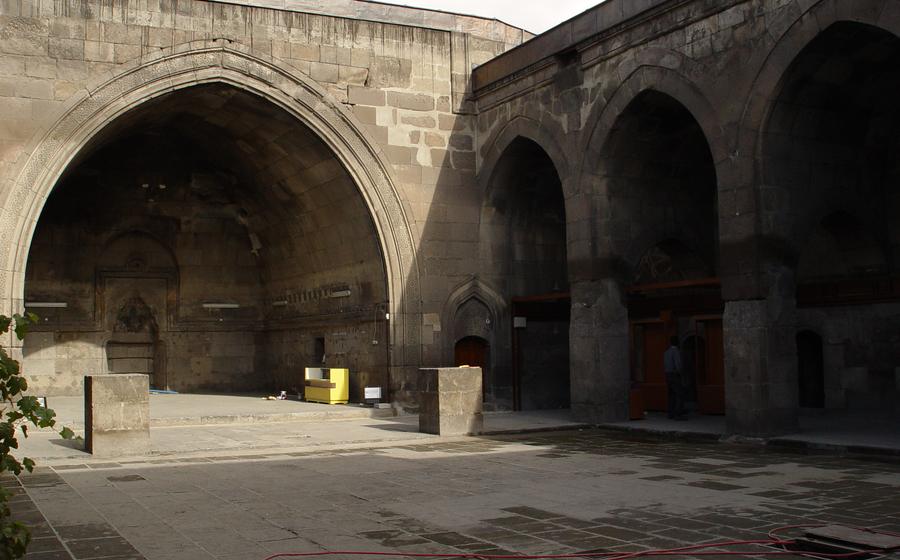
Mahperi Hunat Hatun Mosque
- A Journey Through History and Beauty at Mahperi Hunat Hatun Mosque
- Location and Accessibility:
- Religious Significance
- Art and Photography
- Tourism Potential:
- Insider Tip:
A Journey Through History and Beauty at Mahperi Hunat Hatun Mosque
Distinctive and Unique Elements:
In the heart of Kayseri, Turkey, lies a hidden gem of Islamic architecture, the magnificent Mahperi Hunat Hatun Mosque. Built in the 13th century, this mosque stands as a testament to the region's rich cultural heritage and architectural prowess. Its remarkable preservation and unique features make it a must-see destination for travelers seeking spiritual enlightenment, historical exploration, and artistic inspiration.
The mosque's most striking feature is its stunning stone-carved portal, adorned with intricate geometric patterns and calligraphy that narrate verses from the Quran. The portal invites visitors into a realm of tranquility and awe, hinting at the treasures within. Inside, the spacious prayer hall captivates with its elegant simplicity, featuring a beautifully adorned mihrab (niche indicating the direction of Mecca) and minbar (pulpit) that showcase the mosque's exquisite craftsmanship.
The walls of the mosque are adorned with ornate tilework and calligraphy, each tile meticulously hand-painted with verses from the Quran. These intricate details add a touch of grandeur to the mosque's interior, creating a harmonious blend of art and spirituality.
But what truly sets this mosque apart is its unique octagonal-shaped courtyard, a rare architectural feature that distinguishes it from other mosques in the region. This unique design not only enhances the mosque's aesthetic appeal but also provides a serene and contemplative space for visitors to seek solace and reflection.
As you step into the Mahperi Hunat Hatun Mosque, you are transported back in time, immersed in the spiritual and cultural essence of Kayseri's rich history. Its well-preserved architecture, adorned with intricate details, narrates a tale of faith, artistry, and the enduring legacy of Islamic heritage.
Location and Accessibility:
The Mahperi Hunat Hatun Mosque is situated in the heart of Kayseri, Turkey, making it easily accessible for visitors. It is located in the Kayseri Castle district, near the Kayseri Castle and the Great Mosque of Kayseri, allowing for a convenient exploration of multiple historical sites in close proximity. The mosque is easily accessible by foot, allowing travelers to immerse themselves in the vibrant atmosphere of the city as they make their way to this architectural gem. Additionally, visitors can take advantage of the well-connected public transportation system in Kayseri, with bus stops and taxi stands located within walking distance of the mosque.
Religious Significance
The Mahperi Hunat Hatun Mosque holds immense religious significance as a sacred place of worship for the Muslim community in Kayseri. It serves as a central hub for daily prayers, where devout Muslims gather to fulfill their religious obligations and connect with their faith. The mosque's spacious prayer hall provides a serene and tranquil environment, conducive to spiritual contemplation and reflection.
Beyond daily prayers, the mosque plays a pivotal role in the religious life of the local community. It hosts special events, festivals, and commemorative gatherings throughout the year, fostering a sense of unity and togetherness among the faithful. These events often feature religious teachings, recitations from the Quran, and communal prayers, strengthening the bonds of faith within the community.
The mosque's religious importance extends beyond its role as a place of worship. It serves as a center for Islamic education and guidance, where religious scholars and community leaders offer classes, workshops, and lectures on various aspects of Islam. These educational initiatives aim to deepen the understanding of Islamic principles, promote religious literacy, and foster a greater appreciation for the rich Islamic heritage of the region.
Art and Photography
The Mahperi Hunat Hatun Mosque, with its stunning architectural features and intricate details, serves as a muse for artists and photographers alike. Its unique design and historical significance make it an ideal subject for artistic expression and visual documentation. The mosque's grandeur and intricate details provide endless opportunities for capturing stunning photographs. Its domes, minarets, and iwans create a picturesque composition that draws the eye. The intricate tilework and calligraphy adorning the walls offer a feast for the senses, inviting photographers to capture their beauty and symbolism.
The mosque's interior is equally captivating, with its spacious prayer hall and ornate mihrab providing a serene and inspiring setting for artistic interpretations. The interplay of light and shadow within the mosque creates dramatic effects, enhancing the visual appeal of the space. Artists and photographers are drawn to the mosque's unique atmosphere, seeking to translate its essence onto canvas or through the lens of a camera.
The Mahperi Hunat Hatun Mosque stands as a testament to the enduring power of art and architecture. It inspires artists to create captivating representations that capture the mosque's beauty and significance. Whether through paintings, sketches, or photographs, these artistic expressions serve to preserve and celebrate the mosque's legacy, ensuring its continued appreciation for generations to come.
Tourism Potential:
The Mahperi Hunat Hatun Mosque, with its historical significance and architectural beauty, holds immense tourism potential. Its unique features and religious importance make it an attractive destination for both domestic and international tourists. By promoting Kayseri as a cultural and religious destination, the mosque can contribute to the city's tourism industry. The influx of tourists can bring economic benefits to the local community, including job creation, increased revenue for businesses, and overall economic growth. Moreover, tourism can foster cross-cultural understanding and promote the rich heritage of Kayseri to a global audience, showcasing the city's diverse religious and cultural traditions.
Insider Tip:
For a truly serene experience, visit the Mahperi Hunat Hatun Mosque early in the morning or late in the afternoon, when the crowds are smaller. This will give you ample time to explore the mosque's intricate details and soak in its peaceful atmosphere.
When visiting the mosque, remember to dress modestly and respectfully. Women should cover their hair and wear loose-fitting clothing. It's also important to be mindful of local customs and traditions. For example, avoid speaking loudly or taking photos of people without their permission.
Before leaving the mosque, take a moment to admire the surrounding neighborhood. The area is home to several other historical landmarks, including the Kayseri Castle and the Hunat Hatun Complex. By exploring these nearby attractions, you'll gain a deeper understanding of Kayseri's rich history and culture.
